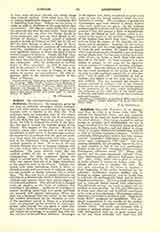

Audiffredi, GIOVANNI BATTISTA, b. at Saorgio, near Nice, in 1734; d. at Rome, July, 1794. He entered the Dominican Order, and soon attracted attention by his taste for books and his talent for the exact sciences. After being occupied in various houses as professor and bibliographer, he was at length transferred to the Dominican house of studies (S. Maria sopra Minerva), and was placed in charge (1765) of the great Bibliotheca Casanatensis, founded in 1700 by Cardinal Girolamo Casanata. Audiffredi published a bibliographical work in four folio volumes entitled “Catalogus bibliothecae Casanatensis librorum typis impressorum, 1761-1788”. The work remains unfinished, not proceeding beyond the letter L, and contains a list of his own publications. Similar works were the “Catalogus historico-criticus Romanarum editionum sculi XV” (Rome, 1785, quarto), and the more extensively planned “Catalogus historico-criticus editionum Italicarum saeculi XV” (ibid., 1794,), which was to give an account of books printed in twenty-six Italian cities. Audiffredi did not live to complete the work. The first part, extending to the letter G, contains a short biography of the author introduced by the publisher. Audiffredi’s position enabled him to become an expert antiquarian, and he found time to cultivate his mathematical talent and to devote himself to astronomy. He built a small observatory, and at intervals busied himself with observation. The eighteenth century was much occupied with the problem of solar parallax. In 1761 and 1769 transits of Venus were observed, and Audiffredi contributed to the work in his publication, “Phaenomena ecelestia observata—investigatio parallaxis solis. Exercitatio Dadei Ruffi” (anagram for Audiffredi). The predicted reappearance in the middle of the century of Halley’s comet intensified scientific interest in cometic orbits. The epoch was favored with a number of brilliant objects of this kind, and that of 1769 distinguished itself by its great nucleus and by the tail which stretched over more than half the sky. Audiffredi took observations of the positions of the comet and published his result under the title, “Dimostrazione della stazione della comet, 1769” (1770). A general taste and capacity for the natural sciences distinguished this learned Dominican, but, like that of many savants, Audiffredis life was one of retirement and obscurity.
H. DE LAAK

